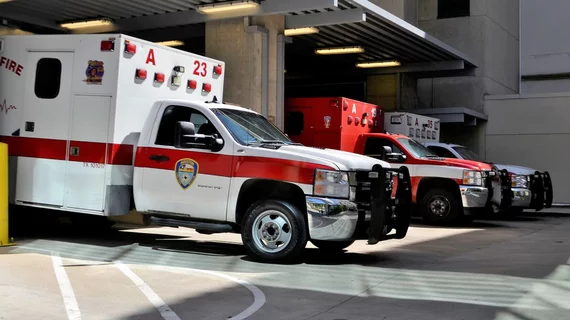Radiology trainees win over trauma surgeons with immediate reads
When trained with high-fidelity simulation, junior radiology residents can master the discipline of reading whole-body CTs right at the trauma scanner—and doing so with high diagnostic accuracy, work speed and interpretive confidence.
In the study behind the finding, 11 second-year trainees (PGY-3) demonstrated their newly polished skills by separating trauma patients who needed immediate surgical attention from those with serious but not life-threatening injuries.
The radiologists also won the favor of several dozen trauma surgeons who, when surveyed one year after full implementation of scanner-based first radiologist reads, registered strong approval of radiologists’ presence at the trauma CT scanner.
The project was conducted at a level 1 academic trauma center and is described in a study published by Emergency Radiology [1]. Lead author is Allison Yang of Rocky Vista University College of Osteopathic Medicine. Senior author is radiologist Suzanne Chong, MD, of Indiana University School of Medicine.
For the study, the researchers built an immersive training capability using a high-fidelity simulation model. Typically such models employ realistic life-scale mannequins to serve as patients.
The team combined this experiential touch with 62 real-world trauma whole-body CT scans, aka “panscans,” which the 11 radiology residents read at the CT scanner.
Crucially, the trainees read the imaging on a desktop computer monitor. This was done intentionally, the authors explain, to “simulate the poorer image quality of the CT scanner monitor and to reassure the residents that critical findings could be successfully identified without using a diagnostic quality PACS monitor.”
To analyze the inputs, Yang and colleagues compared clinical findings made at the scanner with those in final radiology reports filed by attending radiologists who received preliminary reads from overnight residents on duty.
The researchers also timed the reads, considered trainee impressions in light of clinical outcomes and, later in the project, surveyed the trainees as well as trauma surgeons.
Key study findings included:
- Mean time to arrive at clinical findings in the CT scanner suite was 11.1 minutes. This compared favorably with mean times for the on-duty residents’ reads on PACS (24.4 ± 9.8 minutes for head and cervical spine CT, 16.3 ± 6.9 minutes for chest, abdomen and pelvis).
- The trainees identified 53 clinically traumatic findings at the scanner that were confirmed by preliminary and final reports at a concordance rate of 85%.
- In the surveys, the radiology residents agreed or strongly agreed the training had prepared them for trauma panscan reporting, while the trauma surgeons “shifted in favor of radiology presence at the scanner,” the authors report.
From these and other results, Yang et al. conclude their study findings
support the value-added of an in-person radiologist at the CT scanner for whole-body trauma panscans to facilitate timely detection of life-threatening injuries and improve professional relations between radiologists and trauma surgeons.”
The journal has posted the study in full for free.

